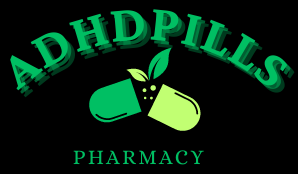Understanding ADHD in Adults
Attention-Deficit/Hyperactivity Disorder (ADHD) has long been associated with children, but its impact doesn’t vanish with age. In fact, many individuals continue to deal with ADHD symptoms into adulthood. It’s essential to recognize that ADHD manifests differently in adults, often presenting unique challenges that can significantly influence their personal and professional lives.
Unveiling the Adult ADHD Experience
1. The Multifaceted Nature of Adult ADHD
Adults with ADHD exhibit a range of symptoms, including inattention, impulsivity, hyperactivity, and poor time management. However, these symptoms may be subtler than those observed in children, leading to misconceptions and delayed diagnoses. Adult ADHD often involves organization, forgetfulness, and difficulty concentrating on tasks.
2. The Juggling Act: Relationships and Social Dynamics
Maintaining healthy relationships can be particularly difficult for ADHD adults. Impulsivity might lead to impromptu decisions, causing friction in personal connections. Moreover, inattention during conversations can cause disinterest, straining friendships and partnerships.
3. Pursuit of Professional Fulfillment
The workplace can either be a thriving ground or a minefield for adults with ADHD. On the one hand, creativity, spontaneity, and hyperfocus can lead to remarkable innovations. On the flipside, challenges with time management and organization might hinder consistent performance, affecting career advancement.
Diagnosis and Misdiagnosis
1. Navigating the Diagnosis Maze
Adult ADHD diagnostic journey can be intricate. Individuals have developed coping mechanisms that mask their symptoms, making it challenging for clinicians to pinpoint the disorder. A comprehensive assessment, considering both childhood history and current experiences, is essential to ensure an accurate diagnosis.
2. The Overlap of ADHD and Other Conditions
Adult ADHD symptoms often intersect with those of other mental health conditions, such as anxiety and depression. This overlap can lead to misdiagnoses and mistreatment. Distinguishing between these conditions is crucial to crafting an effective treatment plan.
Strategies for Management and Success
1. Tailored Treatment Approaches
Managing adult ADHD involves a personalized approach. While stimulant medications like methylphenidate and amphetamines are commonly prescribed, therapy and lifestyle adjustments are equally vital. Cognitive Behavioral Therapy (CBT), mindfulness practices, and organization techniques can empower individuals to better manage their symptoms.
2. Embracing Strengths and Emphasizing Positives
Amidst the challenges, adults with ADHD often possess exceptional strengths, such as creativity, adaptability, and innovative thinking. Recognizing and leveraging these strengths can empower individuals to succeed in their chosen fields and personal endeavors.
Beyond ADHD: Navigating Neurodiversity
1. Embracing Neurodiversity in Society
Neurodiversity understanding is expanding, advocating for a more inclusive society that appreciates diverse cognitive profiles. Shifting perspectives from viewing ADHD as a disorder to recognizing it as a neurological variation can reduce stigma and foster acceptance.
2. Accommodations and Accessibility
In workplaces and educational institutions, accommodations can level the playing field for ADHD patients. Flexible schedules, quiet spaces, and supportive environments can help them thrive and contribute meaningfully.
The Ongoing Journey
Understanding and navigating adult ADHD is an ongoing journey, marked by growth, self-discovery, and continuous adaptation. Through proper diagnosis, tailored treatments, and societal understanding, adults with ADHD can lead fulfilling lives, achieving their aspirations while embracing their unique cognitive wiring. By fostering a culture of acceptance and embracing neurodiversity, we can create a world where everyone can shine, ADHD or not.




